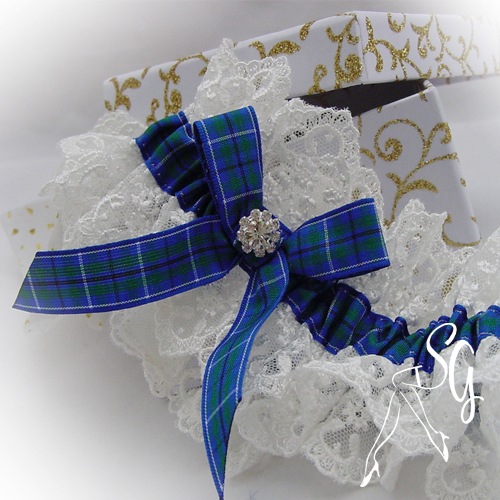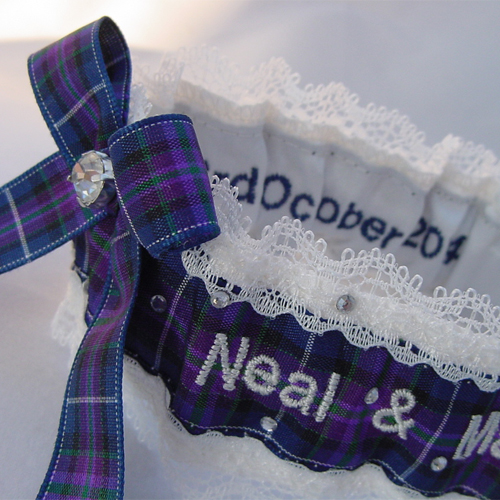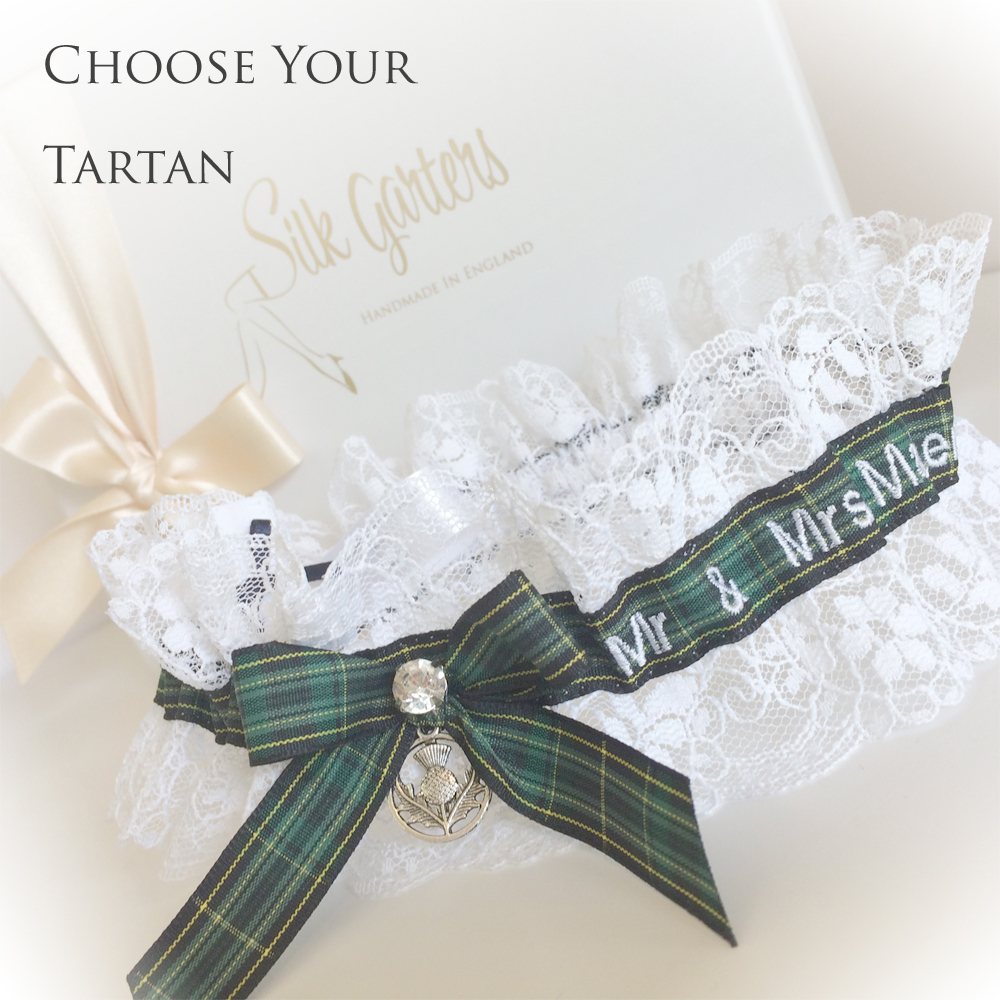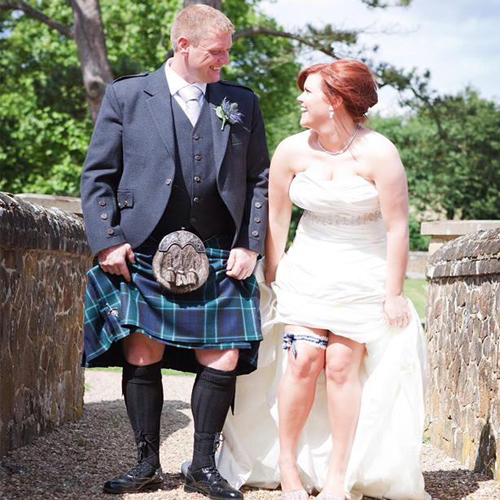Royal Stewart, Black Watch, Buchanan — these tartans are such iconic parts of British fashion that you might assume they’ve existed forever. However, many of the patterns we recognize today are little more than a hundred years old.
With Scotland voting today on whether to become independent, it feels like the perfect moment to write this post. One of my brides recently asked me to create a Macintosh tartan garter as a surprise for her husband-to-be. She specifically requested the ‘Modern’ tartan. But when she compared the photo she had, with a picture I took of our silk fabric, the two didn’t quite match.
Curious, she decided to dig a little deeper online — and discovered ten different Mackintosh tartans to choose from!
“Is there really different types for the one family name?!…In asking that I found this link that has lots for that clan. So maybe it’s just the colours and layout which are roughly the same that matter?! Do you know more/otherwise?”
So I thought I should know more about it, and set out to find out!
Apparently ancient tartan designs were local to an area, where weavers would use natural dyes that were easily available. The tartans weren’t unique to one clan and several different tartans would be worn at one time.
Custom made Tartan garters, made from a tie!
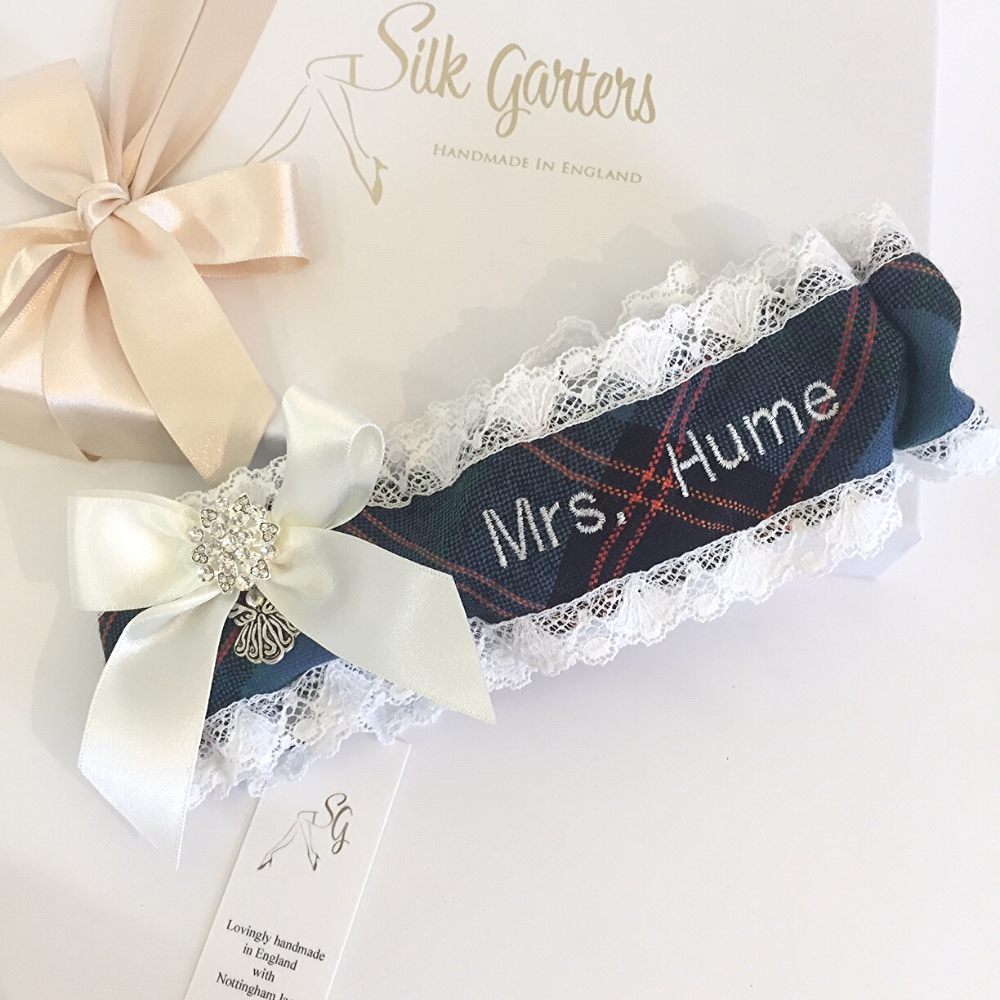
In 1746, the British government passed the ‘Dress Act’, banning the wearing of tartan except by Highland regiments serving in the British army. Authorities associated tartan with Jacobite rebels, as many of the fiercest fighters during the uprisings were Scottish clansmen dressed in distinctive tartans.
In 1782, the government repealed the ‘Dress Act’ after the Highland Society of London applied sustained pressure to restore Highland dress and culture.
By the 1770s, William Wilson & Sons of Bannockburn had become the leading manufacturer of tartan cloth. They secured military contracts and began systematically recording tartan designs. By 1822, they had documented over 200 tartan setts. Some numbered, others given imaginative names like ‘Robin Hood’ — though none were officially linked to specific clans. Today, this remarkable collection resides in the Mitchell Library in Glasgow.
Tartan garters personalised inside
King George IV’s lavish visit to Scotland in 1822 sparked a surge in demand for tartan fabric. The event, steeped in pomp and ceremony, helped establish tartan as the national dress of all Scotland. During this period, many clans created new tartan patterns to meet growing interest and align with the romanticised image of Highland culture.
Official registration and naming of tartans began earlier, on April 8th, 1815. The Highland Society of London — the same group that had campaigned to repeal the Dress Act — wrote to every clan chief with a formal request:
“Be respectfully solicited to furnish the Society with as much of the tartan of his Lordship’s Clan as will serve to show the pattern, and to authenticate the same by attaching thereunto a card bearing the impression of his Lordship’s arms.”
This initiative laid the groundwork for the system of tartan recognition and
Many had no idea what their clan tartan looked like…Alexander MacDonald, 2nd Baron MacDonald of Sleat, wrote back to the Highland Society,
“Being really ignorant of what is exactly The MacDonald Tartan, I request you will have the goodness to exert every Means in your power to Obtain a perfectly genuine Pattern, Such as Will Warrant me in Authenticating it with my Arms.”
H
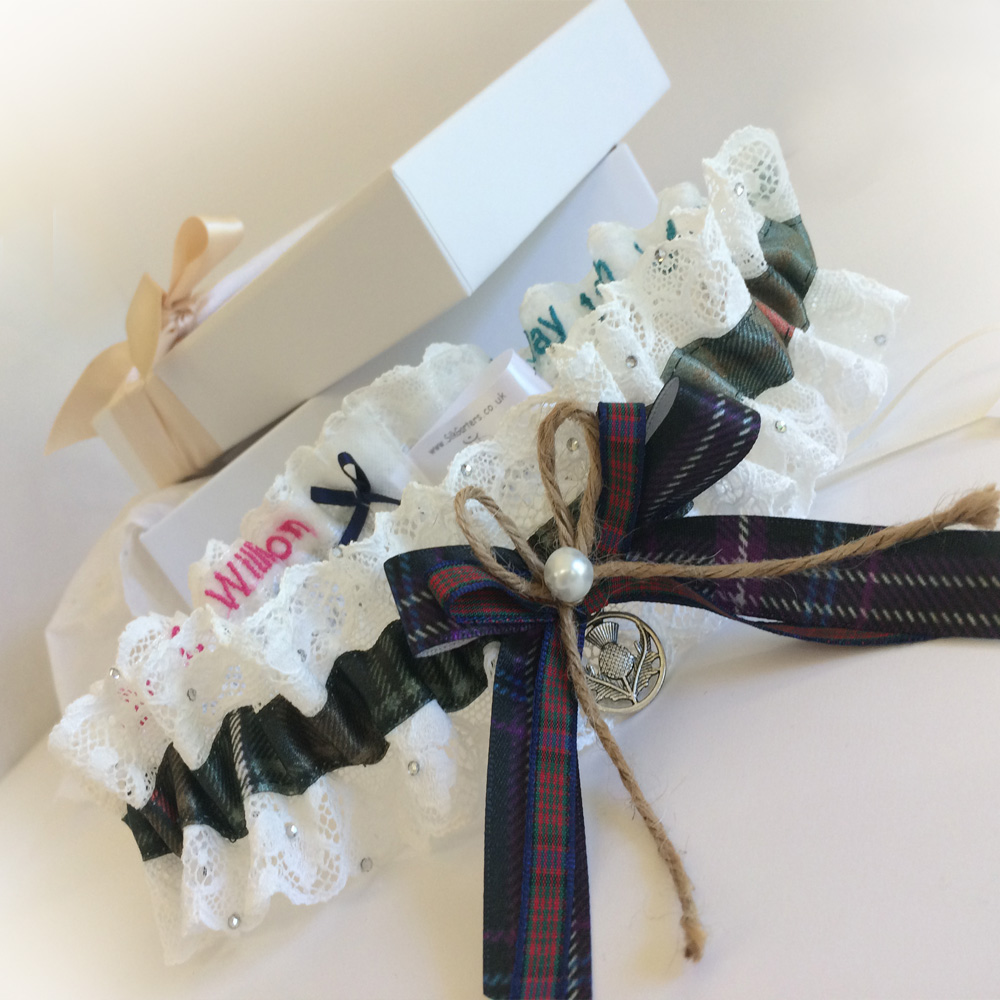
Here I was asked by a lovely bride to combine their families four tartans in this garter!
Royal Tartans
Queen Victoria and Prince Albert made their first visit to the Highlands of Scotland twenty years later. They bought Balmoral and furnished it in ‘Scotts Baronial’ style. Using the Royal Stewart tartan and Hunting Stewart Tartans for carpets and the Dress Stewart for drapes and furnishings.
They invented their own tartans, that are still used today. Their children wore highland dress and the fashion for tartan swept the nation. Around this time chemical dyes started to be used making the tartan fabric designs much brighter.
Each clan has several tartan designs, normally variations of the same design e.g. Stewart has royal Stewart with a red base and dress Stewart with a white base, hunting usually has a green base. ( but was never used for hunting!). Ancient is usually a ‘faded’ version reminiscent of natural fabric dyes. In the 1970’s a new version of muted tartans were introduced that were between the bold Victorian tartans and the ancient tartans of natural dyes.
I’ve made this tartan garter with ribbon and added a sweet thistle charm too.
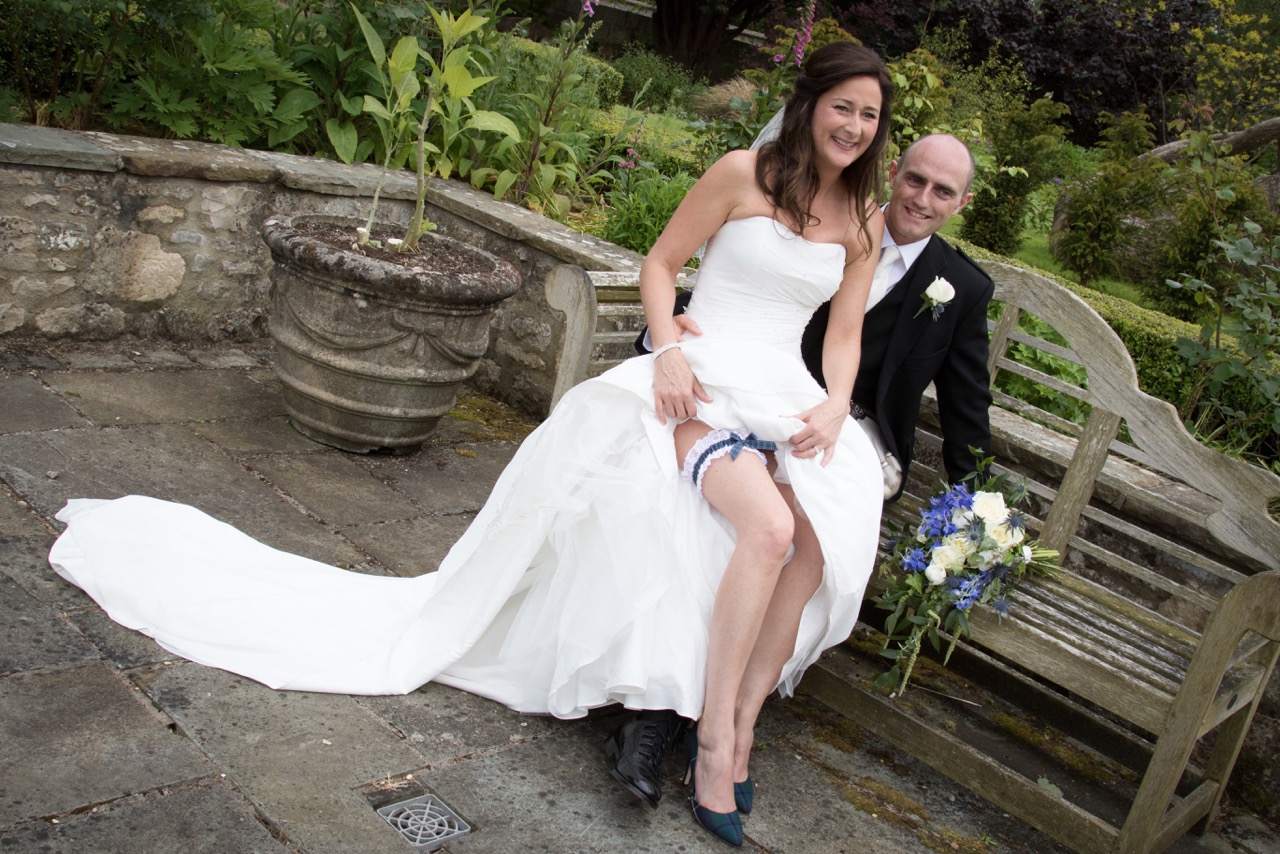
I love it when you send in your garter photos! This is gorgeous bride Jules, wearing her Modern tartan garter.
I’ve been asked for lots of different and unusual tartans lately. I keep many tartans in stock for garters, but also provide a service where you can have one made out of a tartan tie. Why? Because a tie is quite often more easy to come by than the actual fabric…
Real Bride Lynsey’s, Rangers tartan garter photo
Tartans aren’t limited to clans, many companies, clubs and associations have their own tartans.
Below is gorgeous Silk Garters Bride Lynsey, having fun with her groom and Glasgow Rangers tartan garter. His favorite team! I just love this photo!
I love history and I’ve really enjoyed my little forray into researching tartan, I hope you find it interesting!
If you’re interested in any of the garters pictured, they can be made to order. Don’t forget I can make your tartan fabric into a special garter just for you, just give me a call 44(0)77 8080 1102
This entry was posted in History, Tartan Garters, Wedding Traditions and tagged Personalised tartan garters, Scottish independence referendum, Tartan bridal garters, Tartan brides garter, Tartan garter for wedding, Tartan Garters, Tartan shower gifts on
.
